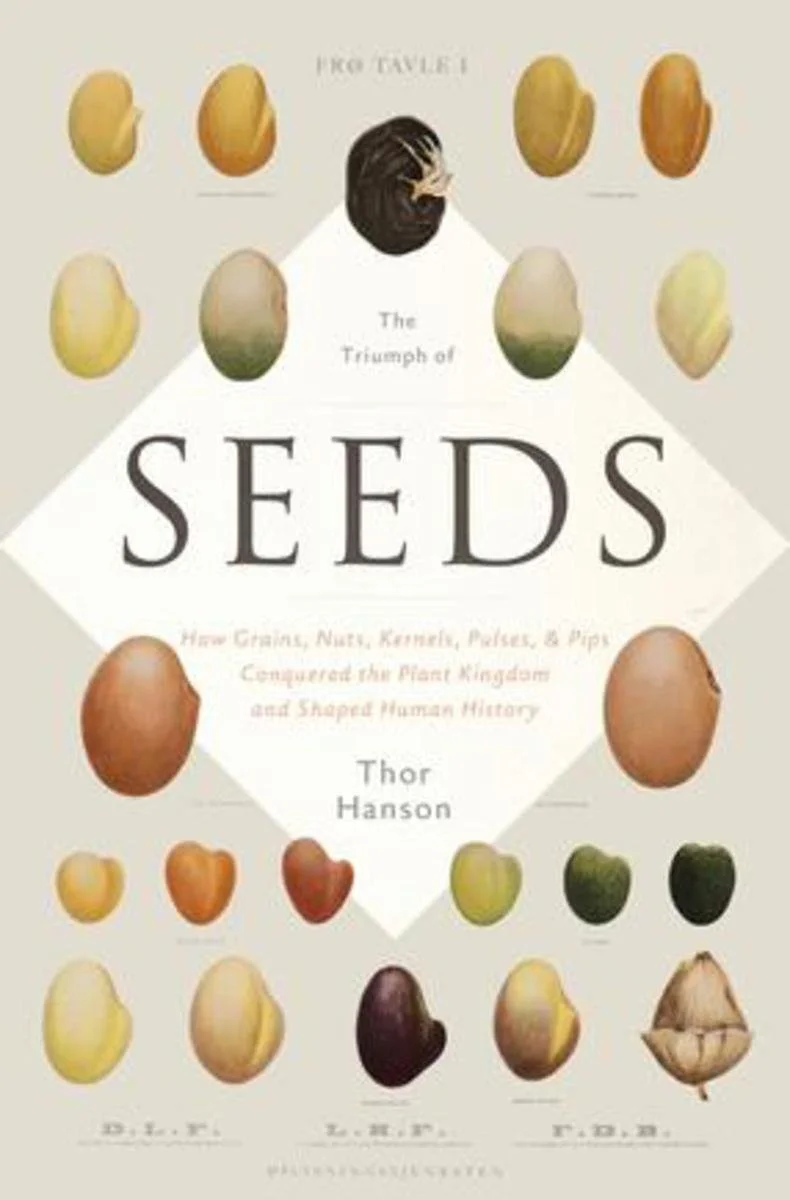THOR HANSON
Excerpt from
The Triumph of Seeds
By Mendel’s time, plant breeding had progressed to a point where
every region boasted dozens of local varieties of peas, not to
mention beans, lettuce, strawberries, carrots, wheat, tomatoes, and
scores of other crops. People may not have known about genetics,
but everyone understood that plants (and animals) could be
changed dramatically through selective breeding. A single species of
weedy coastal mustard, for example, eventually gave rise to more
than half a dozen familiar European vegetables. Farmers interested in
tasty leaves turned it into cabbages, collard greens, and kale.
Selecting plants with edible side buds and flower shoots produced
Brussels sprouts, cauliflower, and broccoli, while nurturing a fattened
stem produced kohlrabi. In some cases, improving a crop was as
simple as saving the largest seeds, but other situations required real
sophistication. Assyrians began meticulously hand-pollinating date
palms more than 4,000 years ago, and as early as the Shang Dynasty
(1766–1122 BC), Chinese winemakers had perfected a strain of millet
that required protection from cross-pollination. Perhaps no culture
better expresses the instinctive link between growing plants and
studying them than the Mende people of Sierra Leone, whose verb
for “experiment” comes from the phrase “trying out new rice.”

